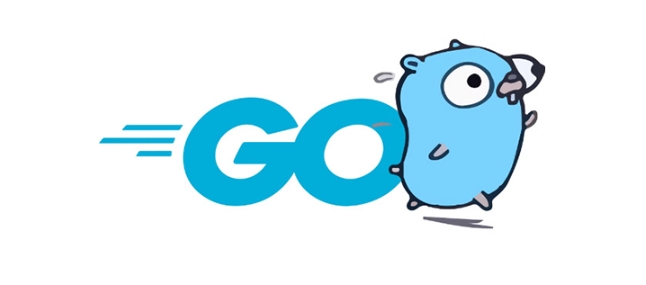Create a file named hello.go using any text editor. 2. Write the code with package main, import "fmt", and func main() containing fmt.Println("Hello, World!"). 3. Run the program using go run hello.go in the terminal to see the output Hello, World!. 4. Optionally, build an executable with go build hello.go and run it directly using ./hello on Linux/macOS or hello.exe on Windows. Your first Go program is now successfully executed.

Writing a "Hello, World!" program in Go is simple and a great way to get started with the language. Here's how you can do it step by step.

1. Set up a basic Go file
First, create a file named hello.go. You can use any text editor (like VS Code, Vim, or Nano).
2. Write the code
Put the following code into hello.go:

package main
import "fmt"
func main() {
fmt.Println("Hello, World!")
}Let’s break this down:
package main– This tells Go that this file is part of the main package, which is the entry point for executable programs.import "fmt"– This brings in the format package, which provides functions likePrintlnfor output.func main()– This is the main function where execution starts. Every Go executable must have this.fmt.Println("Hello, World!")– Prints the text to the console.
3. Run the program
Open your terminal and navigate to the directory where hello.go is saved. Then run:

go run hello.go
You should see this output:
Hello, World!
That’s it — your first Go program is running!
Optional: Build an executable
If you want to compile it into a binary, run:
go build hello.go
This creates an executable file (like hello on Linux/macOS or hello.exe on Windows). You can then run it directly:
./hello
Basically, that’s all there is to it. Go keeps things clean and straightforward.
The above is the detailed content of How to write a 'Hello, World!' program in Go?. For more information, please follow other related articles on the PHP Chinese website!

Hot AI Tools

Undress AI Tool
Undress images for free

Undresser.AI Undress
AI-powered app for creating realistic nude photos

AI Clothes Remover
Online AI tool for removing clothes from photos.

Clothoff.io
AI clothes remover

Video Face Swap
Swap faces in any video effortlessly with our completely free AI face swap tool!

Hot Article

Hot Tools

Notepad++7.3.1
Easy-to-use and free code editor

SublimeText3 Chinese version
Chinese version, very easy to use

Zend Studio 13.0.1
Powerful PHP integrated development environment

Dreamweaver CS6
Visual web development tools

SublimeText3 Mac version
God-level code editing software (SublimeText3)

Hot Topics
 Developing Kubernetes Operators in Go
Jul 25, 2025 am 02:38 AM
Developing Kubernetes Operators in Go
Jul 25, 2025 am 02:38 AM
The most efficient way to write a KubernetesOperator is to use Go to combine Kubebuilder and controller-runtime. 1. Understand the Operator pattern: define custom resources through CRD, write a controller to listen for resource changes and perform reconciliation loops to maintain the expected state. 2. Use Kubebuilder to initialize the project and create APIs to automatically generate CRDs, controllers and configuration files. 3. Define the Spec and Status structure of CRD in api/v1/myapp_types.go, and run makemanifests to generate CRDYAML. 4. Reconcil in the controller
 How to implement a set data structure efficiently in Go?
Jul 25, 2025 am 03:58 AM
How to implement a set data structure efficiently in Go?
Jul 25, 2025 am 03:58 AM
Go does not have a built-in collection type, but it can be implemented efficiently through maps. Use map[T]struct{} to store element keys, empty structures have zero memory overhead, and the implementation of addition, inspection, deletion and other operations are O(1) time complexity; in a concurrent environment, sync.RWMutex or sync.Map can be combined to ensure thread safety; in terms of performance, memory usage, hashing cost and disorder; it is recommended to encapsulate Add, Remove, Contains, Size and other methods to simulate standard collection behavior.
 Building High-Performance Microservices with Go
Jul 25, 2025 am 04:32 AM
Building High-Performance Microservices with Go
Jul 25, 2025 am 04:32 AM
UselightweightrouterslikeChiforefficientHTTPhandlingwithbuilt-inmiddlewareandcontextsupport.2.Leveragegoroutinesandchannelsforconcurrency,alwaysmanagingthemwithcontext.Contexttopreventleaks.3.OptimizeservicecommunicationbyusinggRPCwithProtocolBuffers
 Building and Deploying Go Applications with Docker
Jul 25, 2025 am 04:33 AM
Building and Deploying Go Applications with Docker
Jul 25, 2025 am 04:33 AM
Usemulti-stageDockerbuildstocreatesmall,secureimagesbycompilingtheGobinaryinabuilderstageandcopyingittoaminimalruntimeimagelikeAlpineLinux,reducingsizeandattacksurface.2.Optimizebuildperformancebycopyinggo.modandgo.sumfirsttoleverageDockerlayercachin
 Integrating Go with Kafka for Streaming Data
Jul 26, 2025 am 08:17 AM
Integrating Go with Kafka for Streaming Data
Jul 26, 2025 am 08:17 AM
Go and Kafka integration is an effective solution to build high-performance real-time data systems. The appropriate client library should be selected according to needs: 1. Priority is given to kafka-go to obtain simple Go-style APIs and good context support, suitable for rapid development; 2. Select Sarama when fine control or advanced functions are required; 3. When implementing producers, you need to configure the correct Broker address, theme and load balancing strategy, and manage timeouts and closings through context; 4. Consumers should use consumer groups to achieve scalability and fault tolerance, automatically submit offsets and use concurrent processing reasonably; 5. Use JSON, Avro or Protobuf for serialization, and it is recommended to combine SchemaRegistr
 A Guide to Go's Templating Engine
Jul 26, 2025 am 08:25 AM
A Guide to Go's Templating Engine
Jul 26, 2025 am 08:25 AM
Go's template engine provides powerful dynamic content generation capabilities through text/template and html/template packages, where html/template has automatic escape function to prevent XSS attacks, so it should be used first when generating HTML. 1. Use {{}} syntax to insert variables, conditional judgments and loops, such as {{.FieldName}} to access structure fields, {{if}} and {{range}} to implement logical control. 2. The template supports Go data structures such as struct, slice and map, and the dot in the range represents the current iterative element. 3. The named template can be defined through define and reused with the template directive. 4.ht
 How to pass a slice to a function in Go?
Jul 26, 2025 am 07:29 AM
How to pass a slice to a function in Go?
Jul 26, 2025 am 07:29 AM
When passing slices in Go, it is usually passed directly by value, because the slice header contains a pointer to the underlying array, and copying the slice header will not copy the underlying data, so the modification of elements in the function will affect the original slice; 1. If you need to reassign or adjust the slice length within the function and make the change take effect, you should pass the slice pointer; 2. Otherwise, you can pass the slice directly without using a pointer; 3. If reallocation may be triggered when using append, you must pass through the pointer to make the updated slice visible to the outside. Therefore, unless the entire slice is to be replaced, the slice should be passed in the form of a value.
 what does go vet do
Jul 26, 2025 am 08:52 AM
what does go vet do
Jul 26, 2025 am 08:52 AM
govetcatchescommonlogicalerrorsandsuspiciousconstructsinGocodesuchas1)misuseofprintf-stylefunctionswithincorrectarguments,2)unkeyedstructliteralsthatmayleadtoincorrectfieldassignments,3)sendingtoclosedchannelswhichcausespanics,4)ineffectiveassignment






